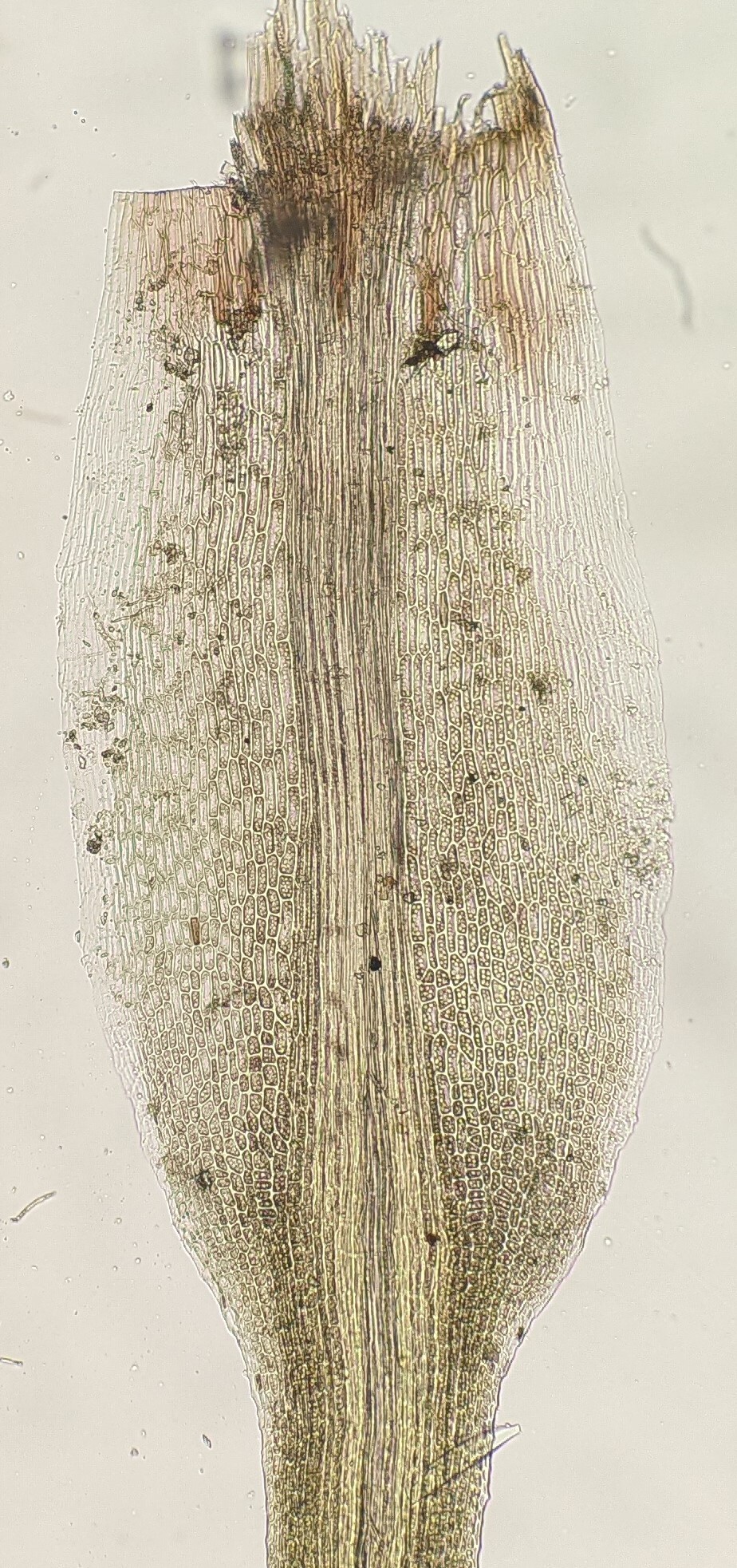Ditrichum
Autoicous or dioicous. Asexual reproduction occasionally by rhizoidal tubers. Tufts or turves on soil, particularly amongst uprooted tree roots, or on rocks. Stems simple or sparingly branched, with rhizoids at base; central strand present. Leaves lanceolate to subulate from a sheathing ovate or oblong to elliptic base, arranged around stem and facing all directions, erect-spreading or falcate-secund when moist, rigid, flexuose or falcate-secund when dry; apex subulate; costa percurrent or excurrent, occupying most of subula, sometimes broad and occupying 1/3 of leaf width at base; margin entire or denticulate near apex, plane, without a border; laminal cells quadrate to rectangular, becoming longer in sheathing base and sometimes at margin near base, smooth, unistratose or bistratose in subula, unistratose in base; alar cells not differentiated. Capsule erect or inclined, straight or curved, ovoid to cylindric, smooth, with a caducous annulus. Calyptra cucullate, smooth, glabrous. Operculum conic or rostrate. Peristome of 16 teeth regularly split into two filaments, or sometimes irregularly perforate or split.
A cosmopolitan genus of around 90 species (Seppelt et al. 2007), but in need of revision (see below); five species in Victoria.
With a limited sampling of species, Ditrichum has been shown in phylogenies of chloroplast and mitochondrial DNA sequences to contain several separate lineages, one which has been removed from Ditrichum and named Flexitrichum (Fedosov et al. 2016; Santos et al. 2021). Further species sampling and molecular study is required to sort the remaining Ditrichum species into genera that better represent their genetic relationships. At least one Australian species, D. difficile (Duby) M.Fleisch., does not belong to the same lineage as the type of Ditrichum and will require placement in another genus (Fedosov et al. 2016; Santos et al. 2021).
 Spinning
SpinningFedosov, V.E.; Fedorova, A.V.; Fedosov, A.E.; Ignatov, M.S. (2016). Phylogenetic inference and peristome evolution in haplolepidous mosses, focusing on Pseudoditrichaceae and Ditrichaceae s.l.. Botanical Journal of the Linnean Society 181: 139–155.
Santos, M.B.; Fedosov, V.; Hartman, T.; Fedorova, A.; Siebel, H.; Stech, M. (2021). Phylogenetic inferences reveal deep polyphyly of Aongstroemiaceae and Dicranellaceae within the haplolepideous mosses (Dicranidae, Bryophyta). Taxon 70: 246–262.
Seppelt, R; Ireland, R.R.; Robinson, H. (2007). Ditrichum in Flora of North America Editorial Committee (eds.), Flora of North America North if Mexico, Vol. 27: Byophyta: Mosses, part 1. pp. 450–458. Oxford Press, New York and Oxford.


